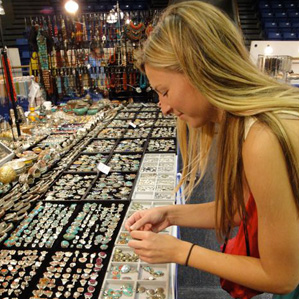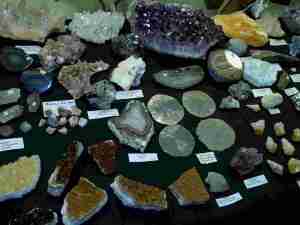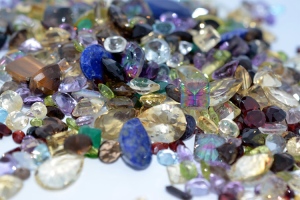It is a common perception that people think that only diamonds have grading. However, they do not know that there is also a set of criteria to figure out the grade of the gemstones.
Following are the basics to determine the gem’s grading:
1. Color of gems
Basically, the value of the gem is based upon its color. Natural gemstone usually reflect tertiary colors(red-orange, yellow-green, or blue-violet) and zero percent saturation( Mainly, a saturation is a state where color contains 0% of gray).
2. Color Grade
A color grade illustrates the composition of main color as compared to other visible colors in the stone. A stone with 100% color grade consider falls in the category of fine quality. Following is a measurement scale:
Excellent: 1-2
Very Good: 3-4
Good: 5-6
Fair: 7-8
Poor: 9-10
3. Color tone
Any color grade is seen in combination with the tone. In a rare case, a colored stone could be white (light 5) or black (Dec 95) with just a hint of color. Basically, it reflects the lightness or darkness of the stone. If a stone is too light in tone, the color will not be rich enough. In a vice versa case, if a stone is too dark, then it will be devoided with transparency and brilliancy.
Tone Scale :
Very Light: 0-20
Light: 25-35
Light-Medium: 40-50
Medium: 55-65
Medium-Dark: 70-85
Very Dark: 90-100
4. Color Zoning
There are various stones, which depicts colors only in partial area or layers. Following is a measurement scale to determine the traits as per the color zoning.
None : The color is distributed in the equal proportion.
Faint : it depicts the visible changes in color saturation.
Gradual : Gradually weaken of color in certain part.
Visible : Stone has clear color patches or layers.
5. Clarity
It is yet another factor that determines the value of the stone. Generally, clarity is judged with a 10x lens. Commonly, it is termed as “Free of Inclusions” over “Lightly”, “Moderately”, “Heavily” to “Excessively Included “. Following is a measurement scale for the clarity:
Free of Inclusions: FI
Lightly Included: LI1-LI2
Moderately Included: MI1-MI2
Highly Included: HI1-HI2
Excessively Included: E1-E2-E3
6. Depth
It includes the height of the stone divided by its minimum width. Ideally, it lies between the range of 60% and 80%. Mainly, the depth is decided by the given shape of the rough stone. Stones below the 50% is called shallow. It is hard to find a maintain saturation in a light tone shallow stone.
7. Cutting Grade
It is a numeric number that describes the proportions and geometry of a gem. The finish grade reflects the polish of a gem. Following is a scale:
Excellent: 1-2
Very Good: 3-4
Good: 5-6
Fair: 7-8
Poor: 9-10
Accepted parameters
Carat Weight: 1 carat or larger
Color: Good (6) or better
Tone: It is the most accepted tone for ruby, sapphire and emerald ranges from medium to dark (65-85).
Clarity: Moderately Included Two (MI2) or better
Average Brilliancy: 50% or more
Cutting/Finish: Good (6) or better
Following is list of laboratories that offer Gemstones Grading :
- International Gemological Institute (IGI), independent laboratory for grading and evaluation of diamonds, jewellery and colored stones.
- Gemological Institute of America (GIA), the main provider of education services and diamond grading reports.
- Hoge Raad voor Diamant (HRD Antwerp), The Diamond High Council, Belgium is one of Europe’s oldest laboratories.
- American Gemological Society (AGS) is not as widely recognized nor as old as the GIA.
- American Gem Trade Laboratory which is part of the American Gem Trade Association(AGTA), a trade organization of jewelers and dealers of colored stones.
- American Gemological Laboratories (AGL)
- European Gemological Laboratory (EGL)
- Gemmological Association of All Japan (GAAJ-ZENHOKYO), Zenhokyo, Japan, active in gemological research.
- Gemmological Institute of Thailand (GIT) is closely related to Chulalongkorn University
- Gemmology Institute of Southern Africa, Africa’s premium gem laboratory.
- Asian Institute of Gemmological Sciences (AIGS), the oldest gemological institute in South East Asia, involved in gemological education and gem testing.
- Swiss Gemmological Institute (SSEF), focusing on colored gemstones and the identification of natural pearls.
- Gubelin Gem Lab, the traditional Swiss lab.





